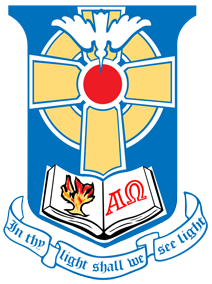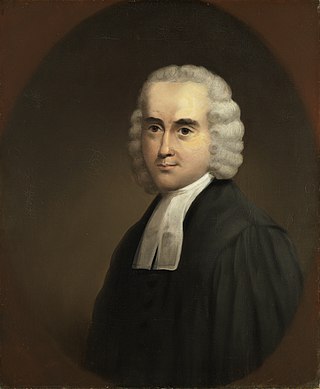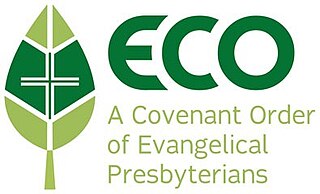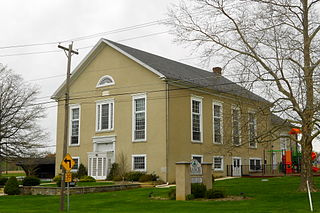
The First Presbyterian Church and Cemetery in New Brunswick, New Jersey is one of the oldest churches in the Presbyterian denomination. It was the seat of the Presbytery of New Brunswick which is now located in Trenton, New Jersey. [1]

The First Presbyterian Church and Cemetery in New Brunswick, New Jersey is one of the oldest churches in the Presbyterian denomination. It was the seat of the Presbytery of New Brunswick which is now located in Trenton, New Jersey. [1]
In 1738 the Presbytery of East Jersey was merged with the Presbytery of Long Island and renamed the Presbytery of New York, and two days after that, the Presbytery of New Brunswick was created. [2]
In late 1726, or early 1727 Reverend Gilbert Tennent was ordained pastor of the congregation. The church records were destroyed or lost, during the American Revolution when British soldiers were quartered in the manse. The records of the First Presbyterian Church (Newark, New Jersey) were destroyed at the same time. Because of damage to the church from the war, a new building was set up to replace the damaged one. [2]
In 1937 John Gresham Machen was condemned by the Presbytery of New Brunswick for disobeying higher authorities in a religious court hearing held in Trenton, New Jersey. [3]
In 1947 a fire caused $147,000 in damages (equivalent to $2,006,000in 2023). [4]
Around 1966, Alfred Yorston removed 520 bodies from the church's cemetery to Van Liew Cemetery to make way for new construction at the church. [5]

The Presbyterian Church (USA), abbreviated PCUSA, is a mainline Protestant denomination in the United States. It is the largest Presbyterian denomination in the country, known for its liberal stance on doctrine and its ordaining of women and members of the LGBT community as elders and ministers. The Presbyterian Church (USA) was established with the 1983 merger of the Presbyterian Church in the United States, whose churches were located in the Southern and border states, with the United Presbyterian Church in the United States of America, whose congregations could be found in every state.

The Cumberland Presbyterian Church is a Presbyterian denomination spawned by the Second Great Awakening. In 2019, it had 65,087 members and 673 congregations, of which 51 were located outside of the United States. The word Cumberland comes from the Cumberland River valley where the church was founded.

The Associate Reformed Presbyterian Church (ARPC) is a theologically conservative denomination in North America. The ARPC was formed by the merger of the Associate Presbytery (seceder) with the Reformed Presbytery (covenanter) in 1782. It is one of the oldest conservative denominations in the United States.

Gilbert Tennent was a Presbyterian revivalist minister in Colonial America. Born into a Scotch-Irish family in County Armagh, Ireland, he migrated to America with his parents, studied theology, and along with Jonathan Edwards and George Whitefield, became one of the leaders of the evangelical revival known as the First Great Awakening. His most famous sermon, On the Danger of an Unconverted Ministry, also known as the "Nottingham Sermon," compared "Old Side" ministers to the biblical Pharisees of the Gospels, triggering a schism in the Presbyterian Church which lasted for 17 years. A prolific writer, Tennent would later work towards reunification of the two synods involved.

The Presbyterian Church in Canada is a Presbyterian denomination, serving in Canada under this name since 1875. The United Church of Canada claimed the right to the name from 1925 to 1939. According to the Canada 2021 Census 301,400 Canadians identify themselves as Presbyterian, that is, 0.8 percent of the population.

Jonathan Dickinson was a Congregational, later Presbyterian, minister, a leader in the Great Awakening of the 1730s and 1740s, and a co-founder and first president of the College of New Jersey, which later became Princeton University.
John Thomson or Thompson was born in Ireland and became a minister in the Presbytery of Philadelphia, later the Synod of Philadelphia. He served as a missionary in both Virginia and North Carolina, where he died a natural death in 1753. He is buried in the cemetery of Centre Presbyterian Church in Mooresville, North Carolina.
The Old Side–New Side controversy occurred within the Presbyterian Church in Colonial America and was part of the wider theological controversy surrounding the First Great Awakening. The Old and New Side Presbyterians existed as separate churches from 1741 until 1758. The name of Old Side–New Side is usually meant as specifically referring to the Presbyterian Church. When one is referring to the debate as a whole, Old and New Light is usually used.
The former Presbytery of New Brunswick is now part of the Coastlands Presbytery as of March 1, 2021

The Reformed Presbyterian Church of North America (RPCNA) is a Presbyterian church with congregations and missions throughout the United States, Japan, and Chile. Its beliefs—held in common with other members of the Reformed Presbyterian Global Alliance—place it in the conservative wing of the Reformed family of Protestant churches. Below the Bible—which is held as divinely inspired and without error—the church is committed to several "subordinate standards," together considered with its constitution: the Westminster Confession of Faith and Larger and Shorter Catechisms, along with its Testimony, Directory for Church Government, the Book of Discipline, and Directory for Worship.
William Pierson Merrill (1867–1954) was an American Presbyterian clergyman, pacifist, author, and hymn writer. He was acknowledged during his time as one of the most influential ministers in America. He is probably best remembered as the author of several well-known hymns, including "Rise Up, O Men of God".

ECO: A Covenant Order of Evangelical Presbyterians is an evangelical Presbyterian denomination in the United States. As a Presbyterian church, ECO adheres to Reformed theology and Presbyterian polity. It was established in 2012 by former congregations and members of the Presbyterian Church (USA), abbreviated PC(USA). Denominational disputes over theology—particularly ordination of practicing homosexuals as pastors and gay marriage—and bureaucracy led to the founding of ECO. In 2018, ECO has over 383 congregations, 103,425 covenant partners and over 500 pastors. ECO churches are egalitarian in beliefs and ordain women as pastors and elders.

The National Presbyterian Church in Mexico is the second-largest Protestant church, and the largest Reformed denomination in Mexico. It is present throughout the country, and is particularly strong in the states of Tabasco, Chiapas, Campeche, Yucatan, Nuevo León, Aguascalientes and Mexico City.

Presbyterianism has had a presence in the United States since colonial times and has exerted an important influence over broader American religion and culture.

The Old Scots Burying Ground is a historic cemetery located on Gordon's Corner Road in the Wickatunk section of Marlboro Township, in Monmouth County, New Jersey. It was added to the National Register of Historic Places on August 15, 2001, for its significance in history and religion. The Old Scots Burying Ground is about an acre in size, about 195 feet above sea level and dates back to 1685. The total number of burials at the cemetery is not precisely known, suggested by Symms, "There are a large number of graves in Old Scots yard without any inscribed stones". Some reports place the number as at least 100 known graves with most headstones of brown sandstone. However, more recent research using ground penetrating radar reported by the Old Tennent Church in 2001 has put the number of confirmed sites at about 122 graves with a possible 140 more unmarked; placing the number at about 262 total graves in the cemetery. In 1945, in an attempt to clean out the site of vegetation and over-growth, a bulldozer was used on the property and as a result some headstones were dislodged and broken stones removed. The defining structure in the cemetery is a tall monument to Rev. John Boyd, created by the J&R Lamb Company. Built to commemorate the first recorded Presbyterian ordination of Rev. John Boyd. The monument is currently owned by the Synod of the Northeast who holds the property deed but it is maintained by the Old Tennent Church. The last identified burial was in 1977.
Reverend John Boyd was a Presbyterian minister in the United States. He was ordained the first pastor of Old Scot's Church, by the First Presbytery, which met in America on December 29, 1706. He was the first Presbyterian minister ordained in America. The event was described by the Rev. Hugh McCauley as "the small beginning of the great stream of organized American Presbyterianism". He was also the first pastor of Old Scot's Church. He was considered important to the Presbyterian history and the Synod of the Northeast placed a 25 foot monument in his honor at the Old Scots Burying Ground in 1900. His monument was restored by the Synod of the Northeast in 2002 and the top Spiral on the monument was replaced at that time.

John Blair was a Presbyterian minister, a Trustee, Professor, and Acting President of Princeton University. His brother Samuel Blair was a leader of the Presbyterian New Light religious movement. His nephew, Samuel Blair was the second Chaplain of the United States House of Representatives.

Daniel Veech McLean was a Presbyterian minister and the fifth president of Lafayette College.
William Tennent III was a Presbyterian pastor and South Carolina politician. He was born and educated in northern Colonial America, but spent the latter part of his life in the southern state of South Carolina. He was a prominent advocate for the dis-establishment of any state religion. He is known for his opposition to British colonial policy, publishing patriotic essays in support of the revolution. He was selected to travel in 1775 into the "back county" of South Carolina to convert Loyalists to the cause. In the state assembly, he lobbied for religious liberty in the drafting of state constitutions.
New Brunswick, New Jersey. The General Synod of the Reformed Church in America meets in the Second Reformed Church of this city this year, on Wednesday, June 4, and a few notes concerning the business which is to come before it must be of very general interest. ... The First Presbyterian Church of this city is one of the oldest in the denomination (dating back nearly a century and a half) and one of the most prominent hereabouts, has recently elected deacons to a term of three years ...
Chancellor Howard Crosby, D.D., LL. D., New York University, New York. Born in New York City, February 27, 1826. Graduated at the University of the City of New York, 1844; Professor of Greek in that institution in 1851; Professor of Greek in Rutgers College, New Jersey, in 1859; Pastor of First Presbyterian Church, New Brunswick, New Jersey, 1861-62; pastor of Fourth Avenue Presbyterian Church, New York City, since 1863, and Chancellor of the University of New York since 1870.